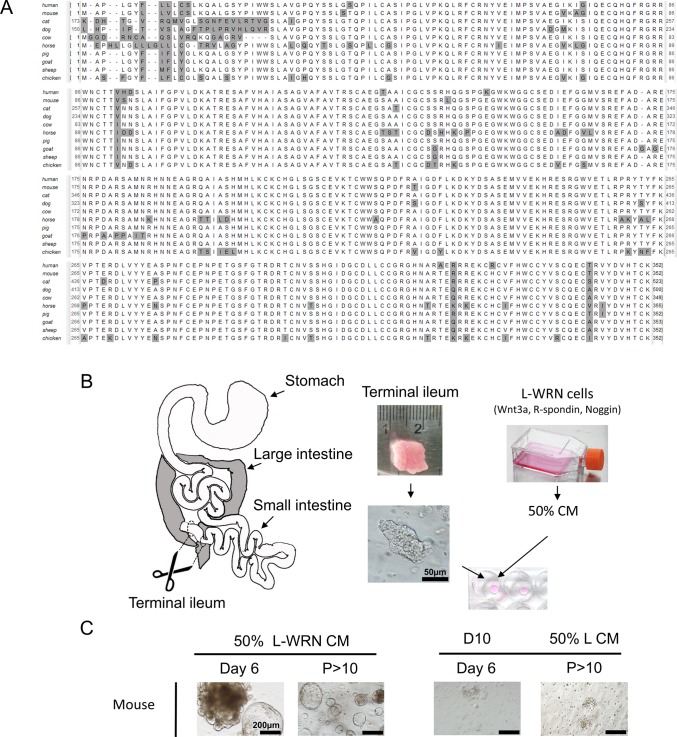Fig. 1.
Conservation of crypt signaling molecules suggests mouse intestine enteroid culture may apply to LF/SC animals. (A) Alignment of Wnt3a protein orthologs from human, mouse, and LF/SC animals shows broad sequence conservation, non-consensus amino acid (gray). The non-consensus N-terminal region of cat and dog Wnt3a are not shown. (B) Schematic of isolation and growth of enteroids. Tissue samples from the terminal ileum were harvested, trimmed to 1 cm2, and crypts were isolated with collagenase digestion. Primary media was incubated with the L-WRN cell line which secrete Wnt3a, R-spondin-3 and Noggin to create 50% L-WRN CM. Isolated crypts were suspended in Matrigel matrix and grown in 50% L-WRN CM. (C) Isolation and growth of mouse crypt enteroids demonstrates successful preparation of 50% L-WRN CM from L-WRN cells. Mouse enteroids only grow in 50% L-WRN CM after isolation (Day 6) to high passage (P>10) number. Mouse enteroids fail to grow when cultured in D10 after isolation (Day 6) or when passed to 50% L CM after high passage (P>10) growth in 50% L-WRN CM.

